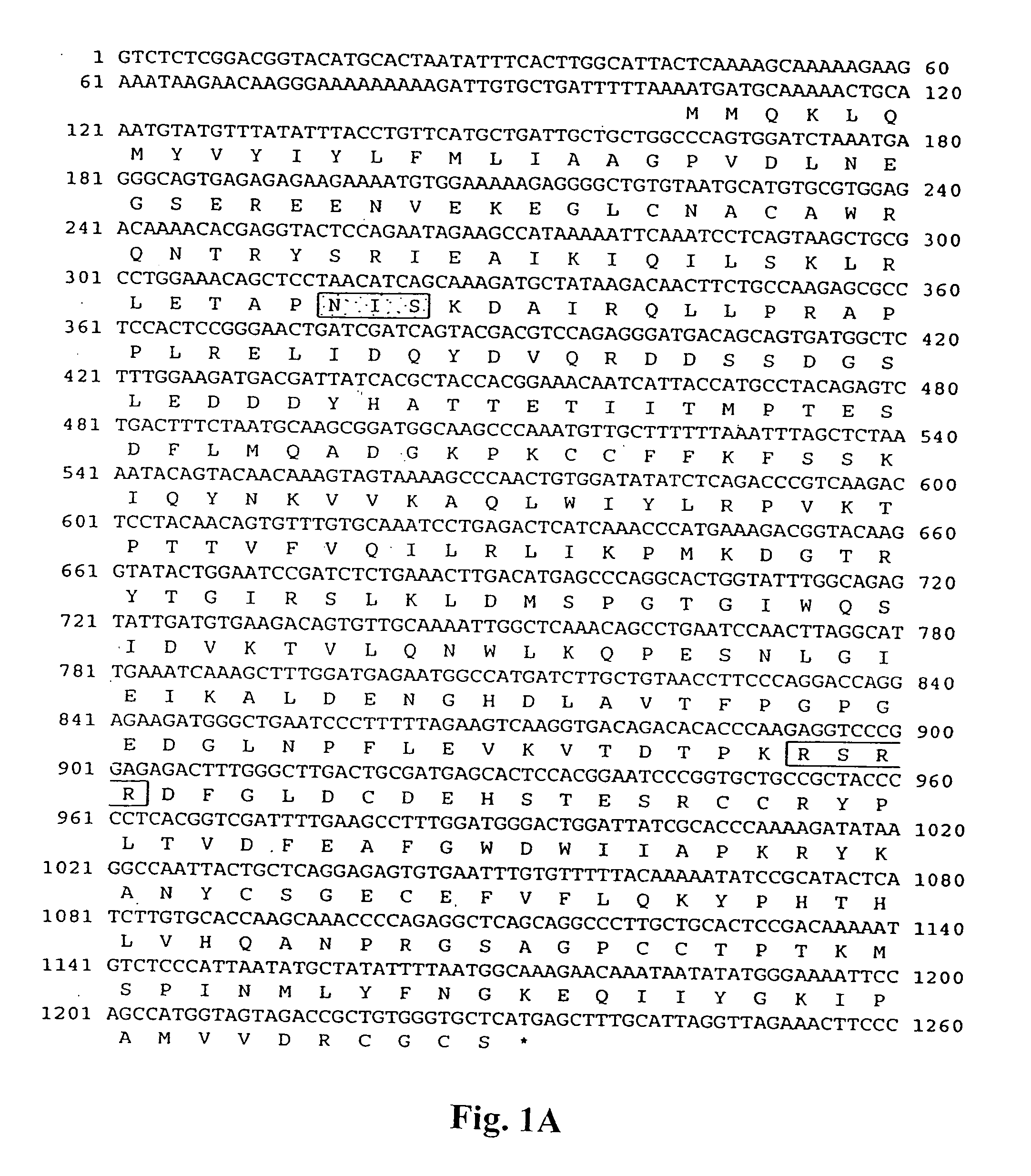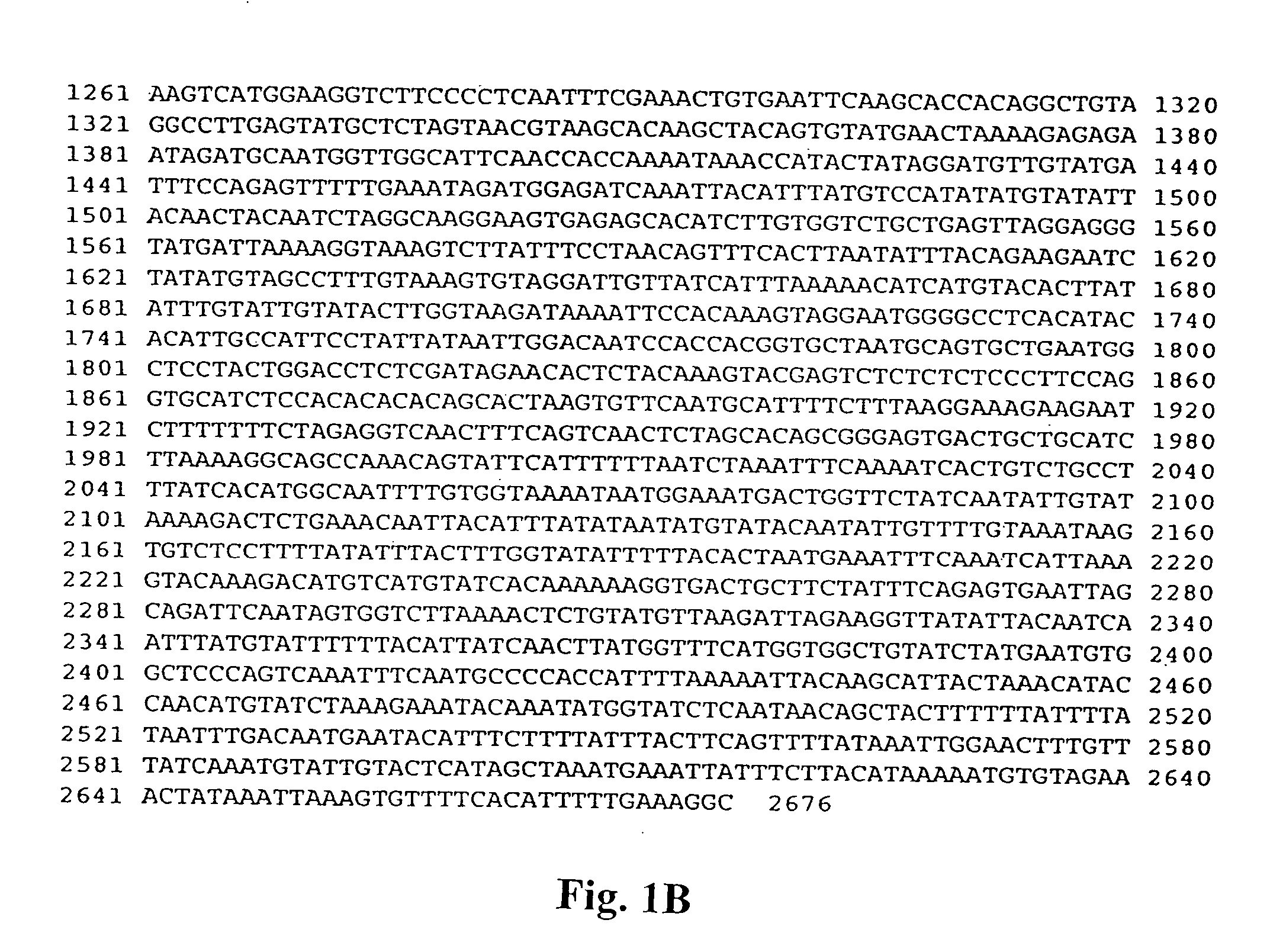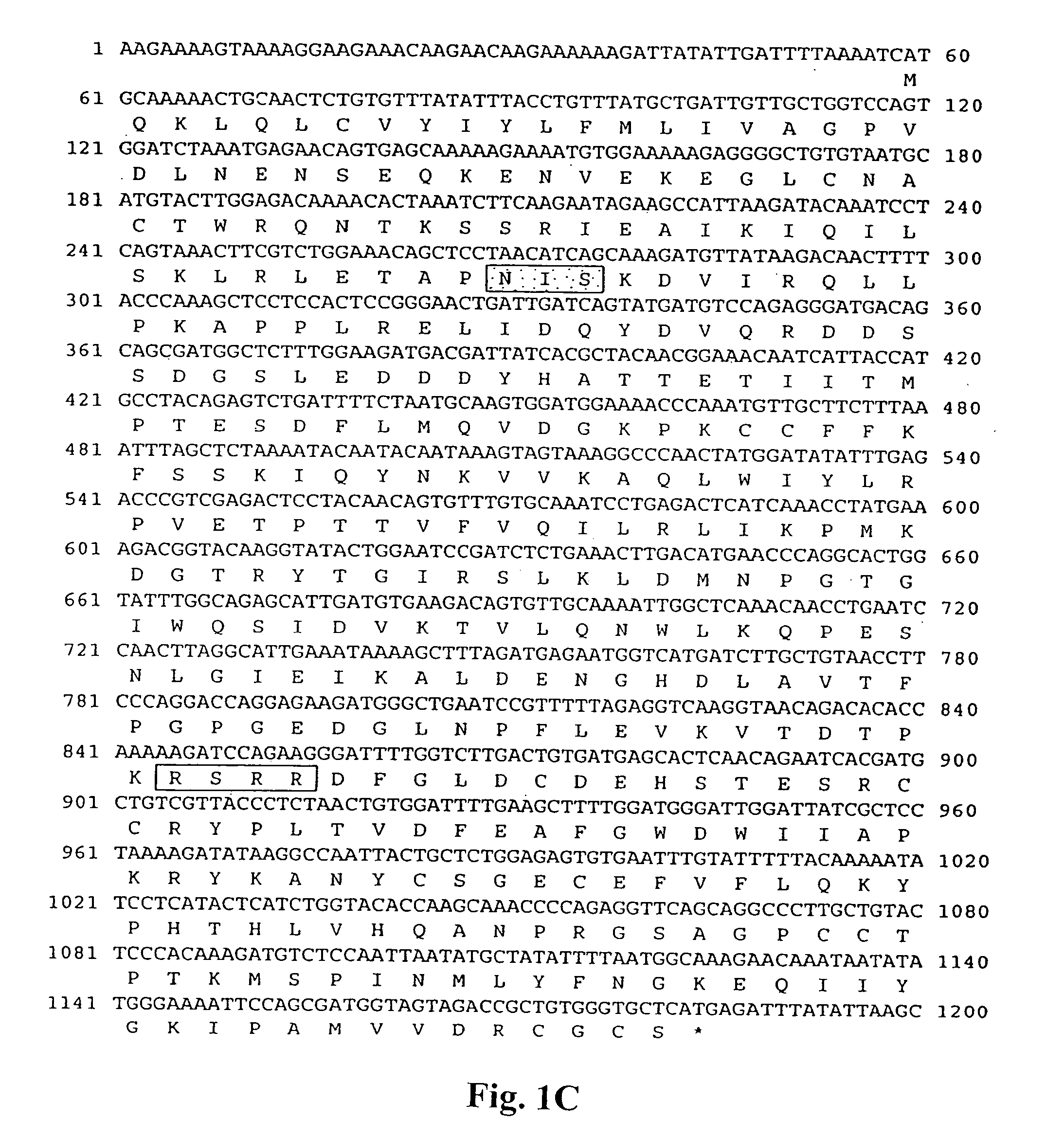Methods to identify growth differentiation factor (GDF) receptors
a growth differentiation factor and receptor technology, applied in the field of transforming growth factor . beta, can solve problems such as binding agents' interferen
- Summary
- Abstract
- Description
- Claims
- Application Information
AI Technical Summary
Problems solved by technology
Method used
Image
Examples
Embodiment Construction
[0100] Distribution of Receptors for GDF-8 and GDF-11.
[0101] The purified GDF-8 and GDF-11 proteins will be used primarily to assay for biological activities. In order to identify potential target cells for GDF-8 and GDF-11 action cells expressing their receptors will be searched. For this purpose, the purified protein will be radioiodinated using the chloramine T method, which has been used successfully to label other members of this superfamily, like TGF-.beta. (Cheifetz et al., 1987), activins (Sugino et al., 1988), and BMPs (Paralkar et al., 1991), for receptor-binding studies. The mature processed forms of GDF-8 and GDF-11 each contain multiple tyrosine residues. Two different approaches will then be taken to attempt to identify receptors for these proteins.
[0102] One approach will be taken to determine the number, affinity, and distribution of receptors. Either whole cells grown in culture, frozen sections of embryos or adult tissues, or total membrane fractions prepared from ...
PUM
| Property | Measurement | Unit |
|---|---|---|
| Dimensionless property | aaaaa | aaaaa |
| Dimensionless property | aaaaa | aaaaa |
| Pharmaceutically acceptable | aaaaa | aaaaa |
Abstract
Description
Claims
Application Information
 Login to View More
Login to View More - R&D
- Intellectual Property
- Life Sciences
- Materials
- Tech Scout
- Unparalleled Data Quality
- Higher Quality Content
- 60% Fewer Hallucinations
Browse by: Latest US Patents, China's latest patents, Technical Efficacy Thesaurus, Application Domain, Technology Topic, Popular Technical Reports.
© 2025 PatSnap. All rights reserved.Legal|Privacy policy|Modern Slavery Act Transparency Statement|Sitemap|About US| Contact US: help@patsnap.com



